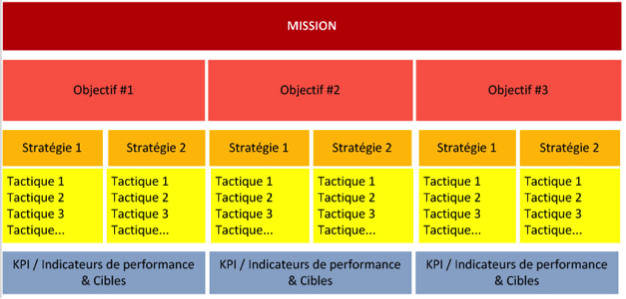Social Enterprise Resource Bank
Building a Communications Plan, Part I
Marketing and communications should be among the top priorities of any organization. However, with small staffs, limited resources, and long hours spent focusing on mission and direct care services, nonprofits—especially those just starting out—may not always take the time needed to share their stories with the community at large.
Even though marketing and communications can be a challenge, we all have to remember this: How will anyone know about the important work you’re doing if you don’t tell them? And if no one knows about you, how can they join you—to volunteer, to access your services, to donate, and to help you spread the word? So, we have to invest in marketing and communications, in a way that such an investment can continue to support our work.
In order to make this manageable—especially for small shops where staff may wear many hats to get everything gone—we need to have a plan. Things may change along the way, but at least you’ll have a road map, instead of sitting down to a blank page or screen every time you think, “We need to post on Facebook!” or “We should have sent that mailing out two weeks ago!”
Starting with Strategic Planning
As an organization, ideally, you have a mission, vision, and core values; everything you do should ladder up here. You may also have a strategic plan that will drive your organization for a number of years. For communications, as in other areas of your programmatic work, you should set objectives, strategies, and tactics to inform your plans. I like this model*:
• Mission – the “Why” – Why do you exist? What do you want to accomplish?
• Objectives – the “Where To” – What you want to achieve – be specific and measurable
• Strategies – the “How” – How will you reach these objectives?
• Tactics – the “What” – The “nuts and bolts” – concrete actions to operationalize your strategies
• KPIs (Key Performance Indicators) – the “How Much” – metrics used to measure success
*Adapted from Adviso (Canada)
You can use different components of your communications plan to express your various objectives, strategies, and tactics – with everything aligning with your mission, vision, and values.
Building Blocks of a Communications Plan
I also like to apply the Who/What/When/Where/Why tenets of journalistic storytelling to help organize and craft a communications plan.
• Why? – Why tell our stories? As discussed at the beginning, your community cannot engage with you if they don’t know about you and what you are doing. We have to communicate!
• Who? – Who are you talking to? Your audiences can be divided between primary and secondary, depending on the program, initiative, or communication piece/channel. These are stakeholders, donors/funders, volunteers, those who access your services, your neighborhood/community/city, the broader church, staff and board members, etc.
• What? – What’s your story/message? What does your audience want/need to know? This is the content of your communications – news updates, program overviews, event details, donor stories, volunteer or partner spotlights, client testimonials, etc. – and media type – blogs, videos, podcasts, press releases, photography, etc.
• When? – When will you share/release this content? As we’ll get to next, creating calendars and planning/scheduling content in advance can be a very helpful way to fit marketing and communications into busy schedules. Timing may range from daily social media posts, weekly blogs, monthly eNewsletters, quarterly print newsletters and direct mail campaigns, etc.
• Where? – Where (what media channels) will your audiences find you? Where can you find them? A good media mix includes website, social media, email, public relations/local press, print, radio, TV/video, etc. – some of these channels reach more mass audiences, and some you can segment and target to specific groups and individuals.
In Part II we will get into the details of actually building out communications plans and content calendars that work well for you!
The NBA incubates new ministries, supporting social entrepreneurs of faith who are serving their communities in a variety of innovative ways and empowering these Disciples-led health and social service projects to focus on growth, impact, and sustainability. Learn more at nbacares.org/incubate.
